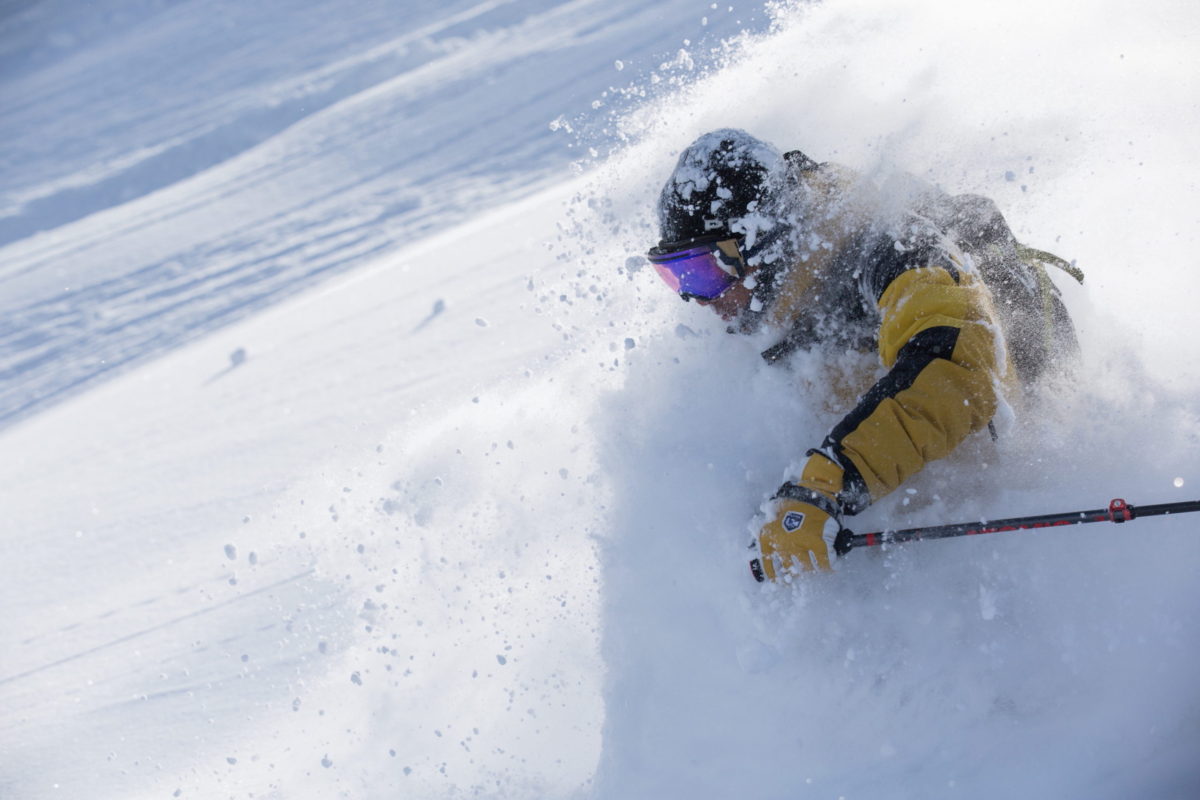Click here for the first part
INDEX
- Why did Kodama start "Journey to slide on the earth"?
- Is it true that "Journey through the Earth" does not require preliminary research?
- What is the budget for "Journey Around the Earth"?
- Approaching income and expenditure as a professional skier
- Professional skier Tsuyoshi Kodama, the next 20 years
Why did Kodama start "Journey to slide on the earth"?
, while working as a professional skier in Japan, Tsuyoshi Kodama teamed up with photographer Kei Sato to an overseas ski trip titled
"Ride The Earth" Starting with Lebanon in 2012, 7 times in 8 seasons (2013 was a break for the second Namagizu Greenland expedition).
Morocco, Iceland, Kashmir, Russia, Greece, and last year China, we have selected countries and regions that have the least image of ski trips. As I mentioned in the first part, this year's event was postponed due to the effects of the coronavirus, but the main axis of Tsuyoshi Kodama's professional skiing activities is definitely this series.
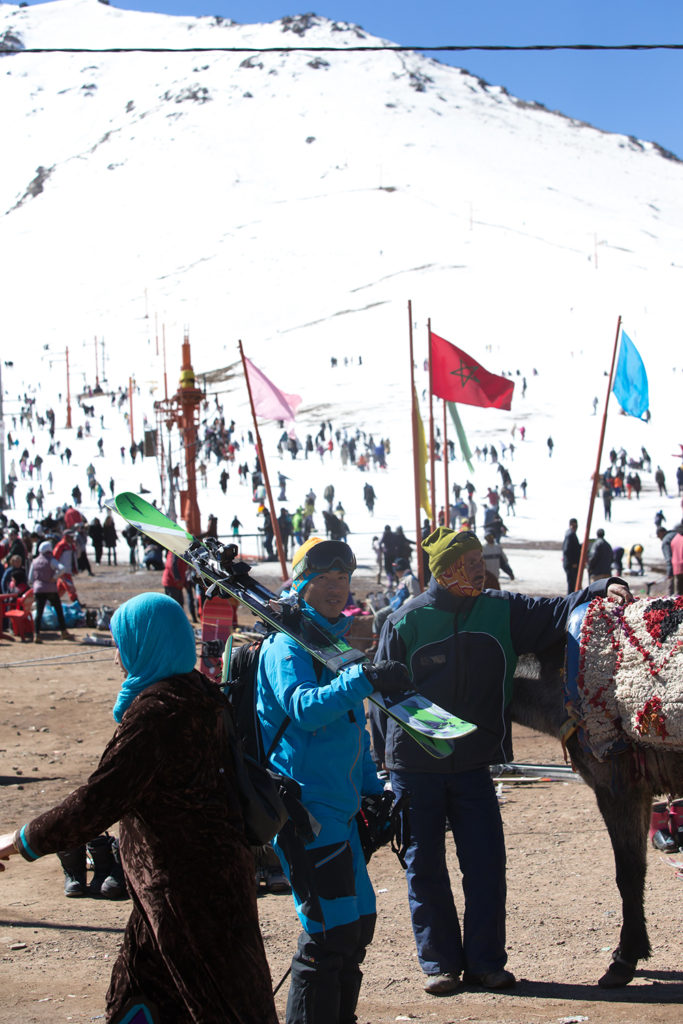
──The story in the first place. Can you explain again why you started "A Journey Around the Earth"?
Professional skiing activities involve traveling, but up until now, photography trips, including expeditions, have tended to involve a relatively large number of people. It was fun in its own way, but when I look back, the most fulfilling times were when I went to Colorado alone for ski warrior training, and when I traveled alone for two months in South America to rehabilitate an injury. I realized that I was in between.
──I see.
However, since I was traveling alone, in other words, I didn't have a photographer with me, so nothing remains of my work. So, I've been wondering if I can go on a trip like that again, and if there's a photographer I can go with.
A friend of the same generation who can share the journey with a similar perspective while traveling in poverty together. At that time, I went on a trip to Alaska with photographer Kei Sato, which was one of the triggers. It is a trip that was published in "Fall Line".
── "Fall Line 2011". A trip to Alaska with Taisuke Kusunoki, Yu Sasaki, and snowboarder Dekacho Shinya Nakagawa.
that's right. Until then, Alaska for me was a place to go to shoot the pictures I wanted to take, and it was a heli-skiing shoot that sought the ultimate riding in the area called "sacred place".
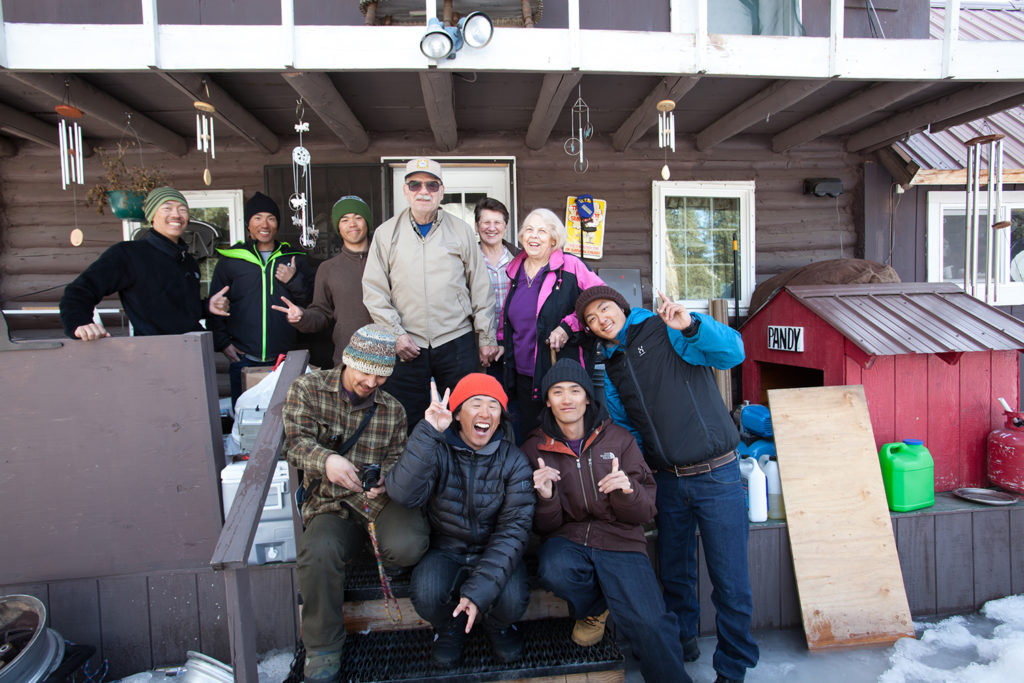
However, in Alaska at this time, the style was to spend as little money as possible and save money while climbing up and down the familiar backcountry. For me, this new style was very fresh and fun.
So, after spending a trip like that, I felt that I could have a fun trip with Kei. So when I told him about my vague plan, he was quite enthusiastic about it, and as a result of talking to several magazine companies, he was featured in the now-defunct ski journal Last Frontier. Became. That's the beginning.
──How did you decide where to go?
I thought it would be nice to have a place where everyone would ask, "Eh?" Starting with Mr. Miura, everyone had an image of ski trips around the world. So, as a result of doing a lot of research, I thought Lebanon would be good. It has an impact.
──To be honest, I didn't expect much until I opened the page. After walking around the desert in the Middle East, I made a one turn on the broken brown remaining snow and gave a high five. "There was snow!" I'm very sorry, but I was imagining such a story.
As a matter of fact, we went there with little knowledge of what kind of place Lebanon was. However, I was surprised when I went there.
──I didn't know it was full of wonderful snowy mountains and skiing culture, and a rich story.
Now that I think about it, it was a series of miraculous coincidences in a short, tight schedule. Since it was my first time, I was very worried. However, the greater the anxiety, the deeper the impression afterward.
──What scene left the biggest impression on you?
It is a day at the ski resort that became the cover photo. The ski resort was blessed with wonderful topography and abundant snowfall, and in the background I could see the city of Beirut, a city of three million people, and beyond that, the Mediterranean Sea shone.
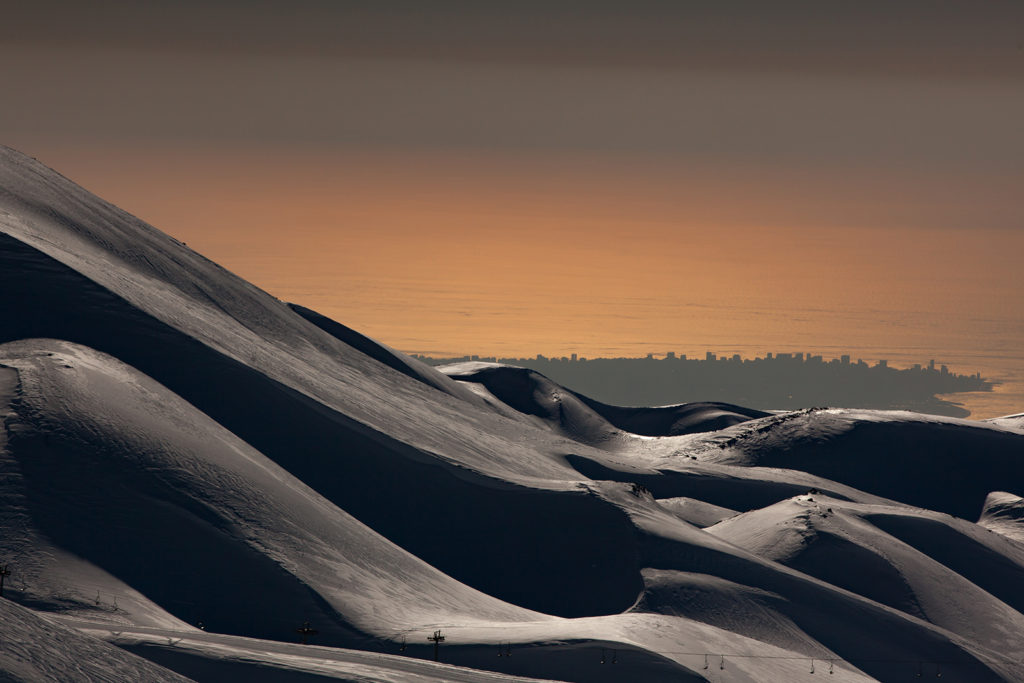
I will never forget that scene. I've been skiing for decades, and I've skied all over the world, but I'm still amazed that I can encounter such unexpected sights while skiing. The world is big and we don't know anything yet. So I want to know more, I want to skate more. I felt such a strong urge.
──It's interesting to wake up to the world at a ski resort in the Middle East, even though you're standing on the edge of the earth from Greenland to the summit of Mount Everest.
For some reason, I felt the vastness of the earth. If you go to Greenland or the Himalayas, it's only natural that you'll come across amazing scenery. However, I never thought that I would be able to find such a paradise in the vicinity of ski resorts, which are located in the living area.
──Unexpected encounters, unexpected surprises.
that's right. In a place like this! That's the impression. The adventure of going through unexplored mountains is an extraordinary world, and of course there are many new discoveries. However, in a land where people live very ordinary lives, there are surprising and fresh encounters. That's why our "journey to slide the earth" is not an adventure. It's a "journey".
At first, I didn't think I would be able to turn this journey into a series. However, this experience became the driving force that made me want to continue this trip every year.
Is it true that "Journey through the Earth" does not require preliminary research?
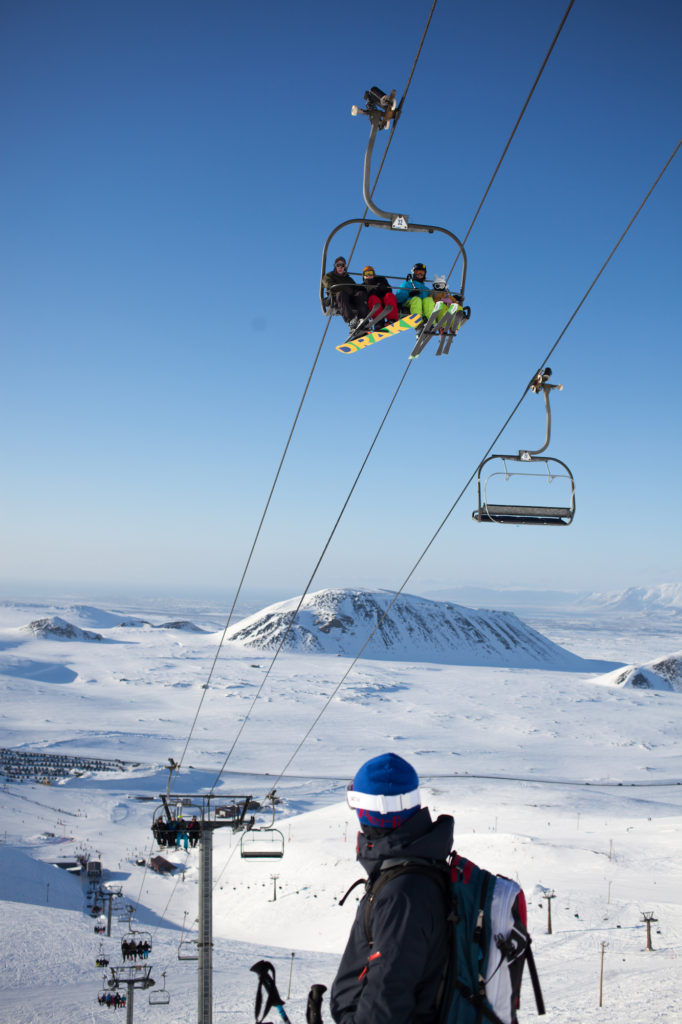
──In fact, how long do you research before going out?
I go out without doing much research. It's become a bit of a convention for us. In this day and age, the more you research, the more you can discover. But it's not fun to do that. We want to be surprised (laughs).
──Isn't that a problem?
For example, Greece and Iceland are tourist destinations, so even if you leave without really researching anything, you'll be fine. On the other hand, Lebanon and Kashmir have one or two quirks, and that's really bad for security. Even so, we are proud to say that we had a rather enjoyable trip.
──As expected.
However, only China was useless. Nothing worked. I was relieved about China. It's a neighboring country, it's a kanji country, and I have a lot of Chinese friends, so I figured it would work out somehow.
──I think I understand.
The first thing I found out was that the credit card I used in Japan didn't work at all. Visa, Masters, and Amex don't work at all. So, most of the people there use electronic money, and even cash is avoided.
Even so, I managed to make ends meet, but since China is a large country, I often travel by plane. And every time we have a lot of luggage, we get overcharged. But I couldn't use my credit card, so I ran out of cash and eventually ran out.
── Haha. so what happened?
It would be the worst if I got stuck here, so I decided to go back to Japan before that happened, so I came back as if I was running away.
──You lost.
Defeated. However, I was planning to go twice at different times from the beginning. China is too big, and the main season was different depending on the region. But as a result, I wasn't allowed to do even half of what I wanted to do on my first trip.
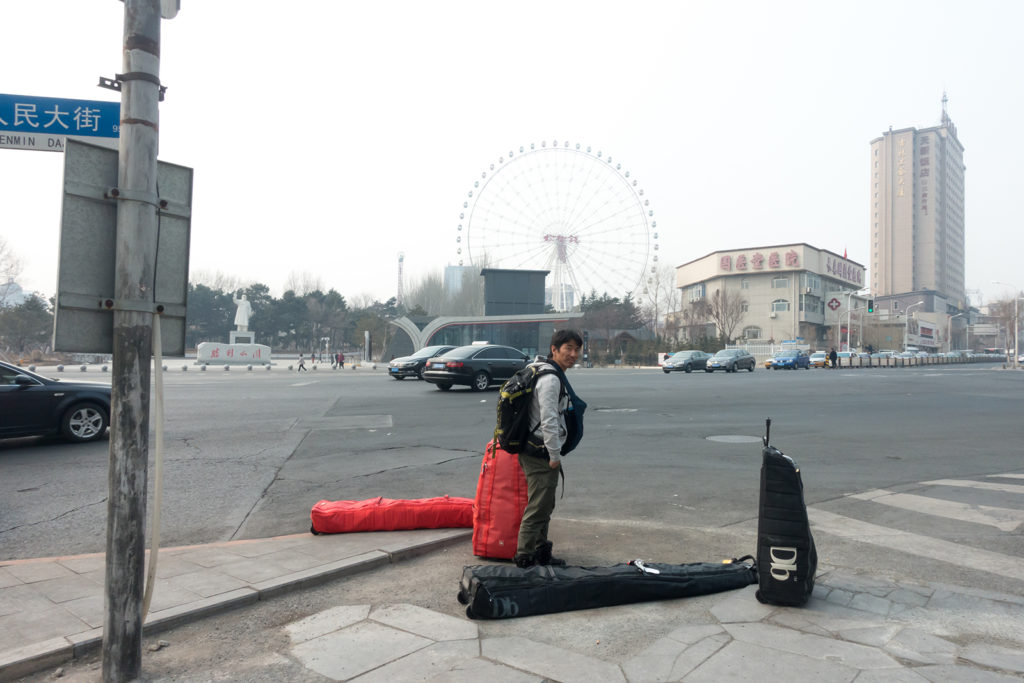
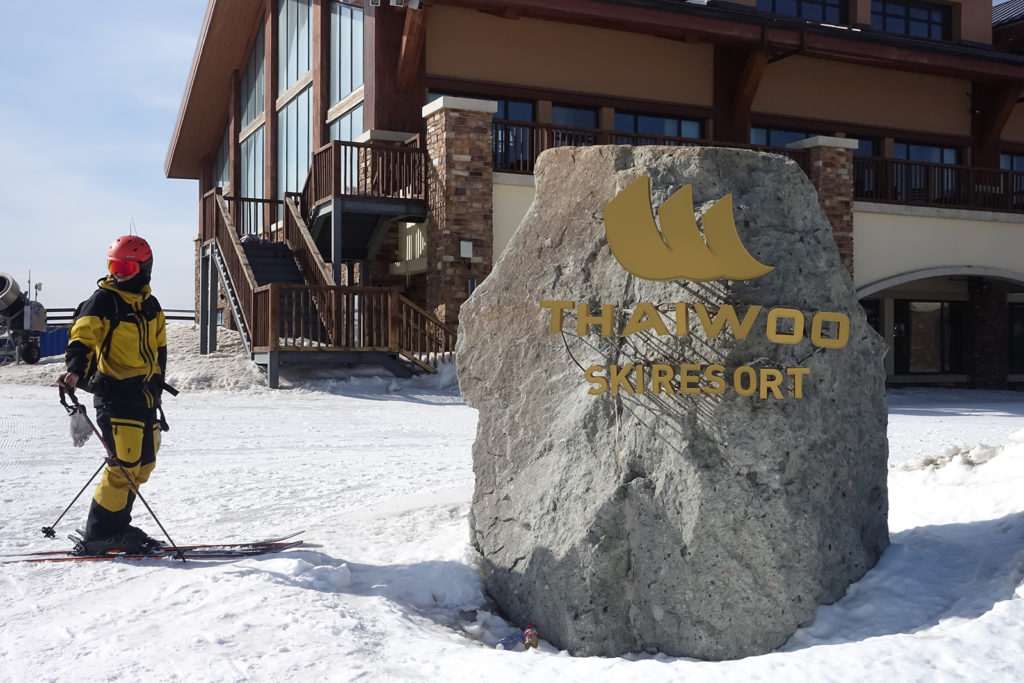
──Aren't accidents one of the real pleasures of traveling?
That's right, but it was beyond that. For example, in Lebanon and Kashmir, Tsubushi works in a sense. When you're in trouble, if you hold it for a while, it will make you flexible...
But that is not the case in China. The laws and ordinances are very strict, and the police are very powerful and dangerous. It's almost like if you're caught once, you won't be able to come back. In that sense, it was the first country where recovery was not effective.
──I see.
Recovery was the real thrill. Even if some kind of trouble happens, yah, I've added another story, I thought nothing but that, but I can't recover, so it won't even be a story. It was a really difficult situation.
What is the budget for "Journey Around the Earth"?
──In addition to the content of your trips, I am also impressed by the fact that you publish them as photobooks every time.
My first trip to Lebanon was for a magazine project, but when I went there, it was better than I expected, and I ended up taking too many photos to fit in the magazine. What should we do with this? Isn't it a waste if it's just a magazine? In the first year, Ski Journal became the publisher, and in the second year, it was published by HS, a publisher in Sapporo.
──I think it's a book that even publishers who publish ski magazines can't publish.
I agree. I was told this by several publishers. You're making a book that you really want to make.
── Those words are half praise, half envy. I know how you feel. In fact, even if I propose a book about skiing in Lebanon or Morocco at a conference, I don't think they will understand. "Who's going to buy it?"
That's right (laughs). If you think about it, it's a masculinity of the person in charge of the company called HS that is doing it now. Because he really agrees with our spirit.
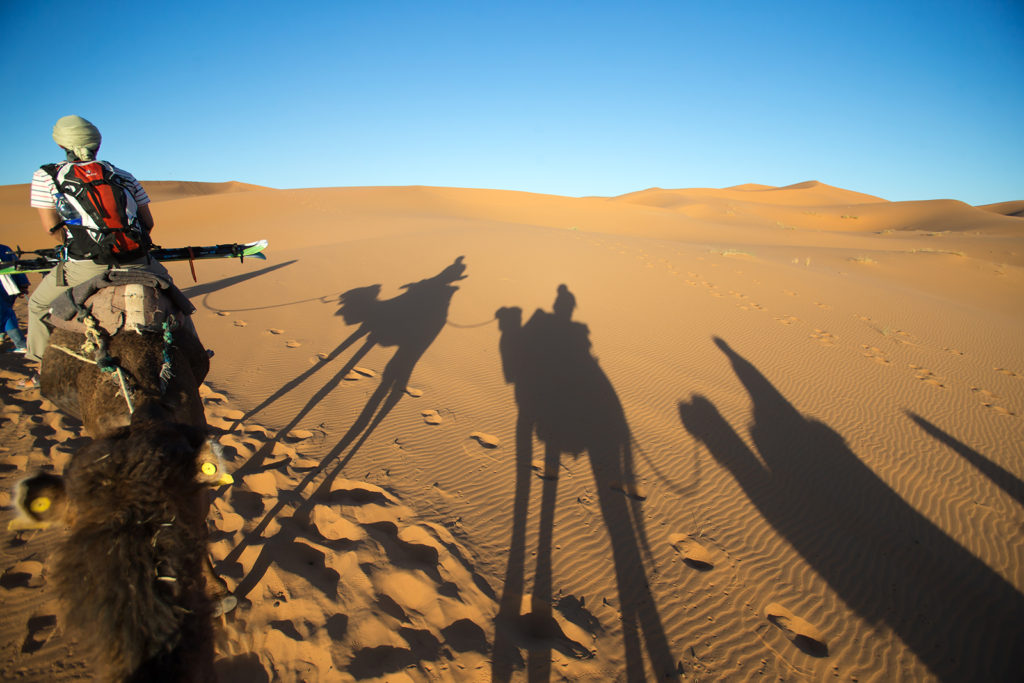
──What kind of publisher is it?
This is the publisher who published the book "GREENLAND - Umi to Yama Tennen no Kiseki" (written by Namara Habit-X Greenland Expedition). I worked desperately to make that book over a period of about a month, but it seems like they knew me and wanted to work with me. I have been friends with the editor since then, so to speak, he is a good supporter.
──How do you make money?
It seems that the publisher is planning to pay in the long term. Every time, at first it sells with some momentum, but after that, it feels like it will sell slowly over the next few years. We are also collecting sponsors' cooperation expenses, etc., and are preparing to the stage where publishers can publish as much as possible without spending money.
──Will it be an income for Take and Kei?
For the time being, my writing fee, Kei's photo manuscript fee, Dekachou's design fee, etc., are included in the budget in the form of manuscript fees.
──It's important not to get paid. To continue next time.
Self-publishing is not sustainable. After all, I think that it is important to have the awareness and reality that you are making it as a job, not without a paycheck. When I receive money, I want to respond to it, and my desire to make good things grows. Then you can be proud of the activities of a professional skier.
──How much does the sales of the book cover for the travel expenses?
In addition to books, including sales of goods such as T-shirts, if you make a profit, you will have money that you can carry over to the next year. I've increased it little by little, and now I'm finally at the stage where I can pay for a round-trip air ticket to my destination.
──As expected, it seems that there are a lot of things to take out.
If I calculate it in detail, I think I will be in the red, so I try not to calculate it in too much detail. For me, it's like the main axis of my activities. It is my own business card, a presentation material to get people to know, and it is also an expression activity as a professional skier. This book has such a variety of roles, so even if it is a negative in calculation, I think it is a positive at all.
──If you think about it that way, "Journey through the Earth" would be completed by publishing a book.
Exactly so. As for the flow, we first make a flyer and advertise it at the ski equipment early ordering event before summer. I'm going to make a book like this. It will also be a topic of conversation when explaining new products to the customers who attended. Doesn't it make for a lot of conversation?
──Certainly.
So, in the fall, we will have you come to the shop event with our publication commemorative caravan. It's the time when the products are sold at the shops. In this way, you can connect with many customers before the season. They are also dark-eyed people who are likely to connect in the season and on the snow. In many ways, it revitalizes my activities.
──It’s an unexpectedly complete system.
I still like to express myself. But I don't need any extra explanation. "I'm a professional skier chasing snow all over the world," he said. That's it. It's very simple, isn't it? I love skiing. I love it, so I keep doing it. I feel a little comfortable with myself.
Approaching income and expenditure as a professional skier
──So, how many sponsors do you currently have contracts with?
Peak Performance , Atomic , Smith and Matsumoto Wax have financial deals . These four companies. Other product offerings include Hestra , Kamp, Deuter , Primus and Neemo .
──Currently, what percentage of Take's annual income is the sponsor fee?
It's about half.
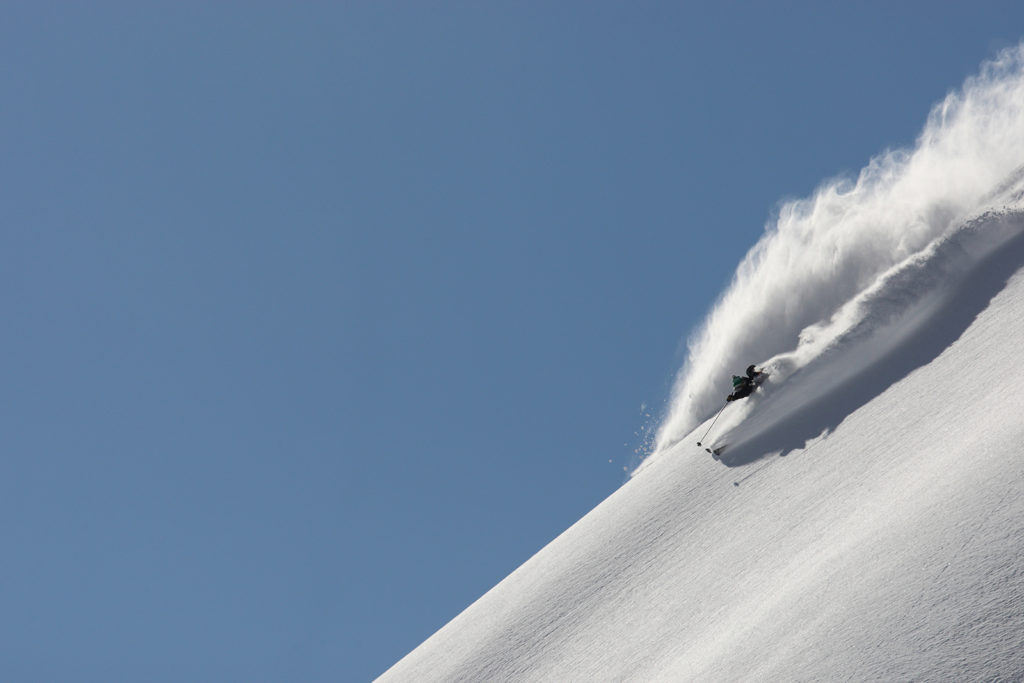
──What about the other half?
The next largest income is during the season, such as lessons and tours. On weekends, there are many event tours of Peak Performance, Ishii Sports, and other shops. For backcountry tours, I rely on a qualified guide I know. Other than that, on weekdays, I have sessions like private lesson tours where I skate with Teine and Kiroro with customers who come directly to me.
──Are you a regular on private tours?
that's right. In my case, I basically don't advertise on my website, etc., so I don't have any familiar people who have participated in tours or events before.
──Do you have lectures?
Yes, we have it. However, when combined with magazine manuscript fees, attendants, talk show rewards, etc., it's about the remaining 10%. Sponsor fee and 90% on snow.
──When did you become able to live solely on ski-related income?
I think I was about 26 when I quit my part-time job. Is it about 20 years since then? Until then, I worked at golf courses, civil engineering, mowing riverbeds, etc. in the summer, and skied in the winter. I was making good use of unemployment insurance and other benefits.
──It's amazing that you've been living with just one pair of skis for 20 years.
I think I was very lucky. It started at the same time as the backcountry boom and the "icon" series, and eventually the contract money started to come in, and I was able to concentrate on my own activities.
──You are one of the few in this genre in Japan.
I think it's hard for freeride skiers these days. Manufacturers must have had the strength back then. Even in a minor genre like mine, I was able to get by without doing a part-time job, including expedition expenses. Also, there were quite a lot of overseas coverage for magazines, so I was able to get invited to overseas coverage and shoot elsewhere while I was there.
I may have received the most contract money when I was in my late 20s and 30s. While it's gradually withering away now, I wonder if the demand is increasing. Well, I am aware that it is the role of a person who understands this genre well from a standpoint.
──Is your wife working?
I'm a nurse, but I'm currently on leave, and there's an atmosphere that I'm going to resume.
──It must be a really difficult time with the coronavirus, but for professional skaters, surfers, and climbers, in a sense, you are said to be the ideal marriage partner. I have a high income, I have a job, I can live in the mountains and near the sea, and on top of that, I am reliable both physically and mentally (laughs).
That's right. I feel some kind of maternal instinct. Now, my work has drastically decreased due to Corona. There are no more exhibitions. I can't make a book this year either. I have plenty of free time. I have never been told, "If that's the case, look for a part-time job." On the contrary, I'm saying, "Well then, I should work a little more."
──That's wonderful.
"You're in charge of doing what you love," they say. Well, I guess you made up your mind when you wanted to be with someone like me. I am truly blessed and grateful to her wife.
Professional skier Tsuyoshi Kodama, the next 20 years
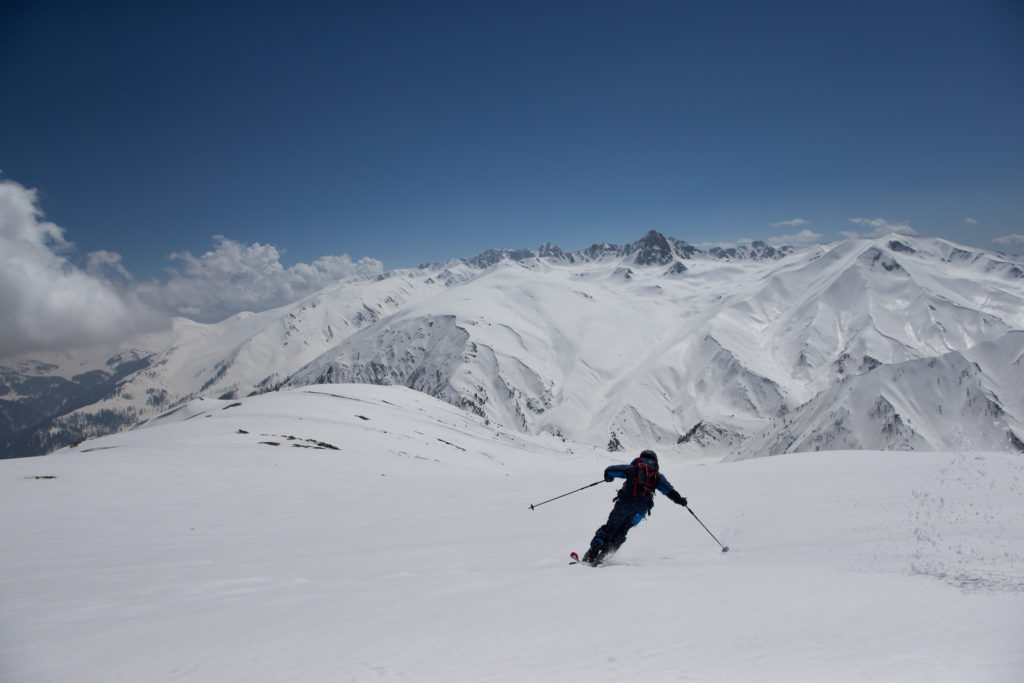
──Do you plan to go on an adventurous expedition like before, instead of a “journey around the earth”?
Expedition? Well, it was a fun experience and a very meaningful time. However, that kind of expedition has a destination. After all, it can only be established when there is a strong desire to go there and skate. The mountain is very difficult, and it is tough to do it alone. In that case, I think it's going to be a story to gather friends and go on an expedition.
──That's true.
The trip I'm doing now is a trip because I don't dare to decide the destination, but I'm continuing my activities in that way now. That's the difference between adventure and travel.
──Then, how long will the “journey to slide on the earth” last?
It's still going on. I am always making a list. On my computer, I have a folder called "Journey through the Earth," where I have files for the countries I want to visit.
There are countless countries I want to visit, but the good thing about this trip is that thinking about where to go is about half the fun. The excitement is so much fun.
──If you follow the route of countries and regions that don't have an image of skiing, it seems like you'll reach a dead end in a few years.
That's when it's time. Once you've made a rough run with this taste, you can switch to a different theme next time. Maybe it will be an adventure style, and depending on how I think about it, the theme will come up.
──Speaking of extremes, you could say "Trip on the Earth - Switzerland". (laughs)
To tell the truth, at some stage I also want to put in the royal road. There will be Switzerland that I don't know, and there will be Switzerland that everyone doesn't know. But when you turn the page, what? I want to make it a trip that surprises me.
──If you think about it that way, the themes certainly come to mind.
That's right. There are as many as you want. Think, act, travel and discover. I think that's the value of traveling and skiing. We want to express that in our activities in a fun way. Well, for this trip, it's good to have a level where you can think that you can go by yourself if you try a little harder. I think I can go, but I usually don't go.
──Are you 46 now?
I am 46 years old this July.
──How long do you think this journey will continue?
I don't know (laughs). However, the most important thing is to keep your curiosity, or rather, to keep your mind fresh. Oh, I don't think it makes me feel like I have to do it again this year. Well, I would be happy if we could continue as we please.
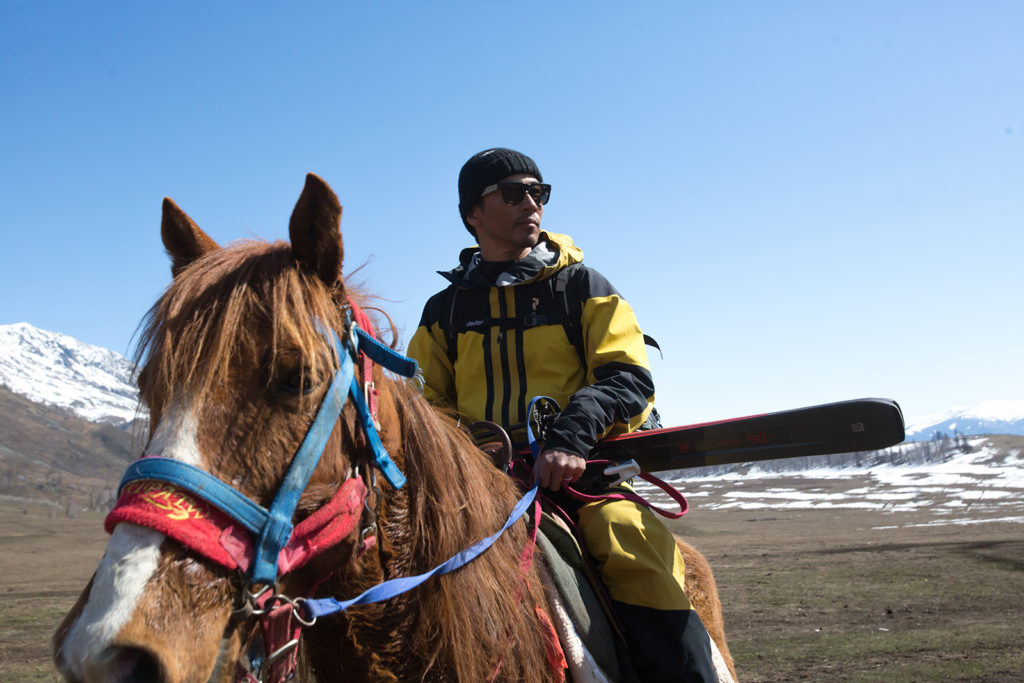
Editor + Writer
Riki Terakura Chikara Terakura
After working for the Miura Dolphins led by Yuichiro Miura for 10 years, he has been involved in moguls and freeskiing as a member of the BRAVOSKI editorial staff for nearly 30 years. Currently, he is working on "Fall Line" as the editor-in-chief, and is active in various media as a freelancer. He has been writing interviews for over 10 years in the mountaineering magazine PEAKS.
Photographer
Norimichi Kameda
As a ski photographer, Norimichi Kameda boasts a career of over 35 years, starting with the Yuichiro Miura & Snow Dolphin team, and has been a pioneer in freeride scene photography in Japan and overseas. He is also the first Japanese photographer to focus on Scott Schmidt and Glenn Pleick overseas, as well as Tsuyoshi Kodama, Daisuke Sasaki, Makoto Asakawa and Hitoshi Ishibashi in Japan.
Photographer
Hiroshi Suganuma Hiroshi Suganuma
started his career as a ski photographer in his twenties. Currently based in Kamakura beachside, he continues to shoot mainly on snow and ocean sports. Over the years, he has traveled to beaches and snowy mountains around the world and is endorsed by many skaters and ocean athletes. His photo collection includes "SHAPE OF SNOW".
Photographer
Kei Sato Key Sato
started his career as a snowboard photographer, focusing on professional magazines. He is now supported by many riders, from snowboarders to skiers. In addition to being in charge of photography for Tsuyoshi Kodama's "Journey to Slide the Earth", he is also a good partner who works together from planning to events.

